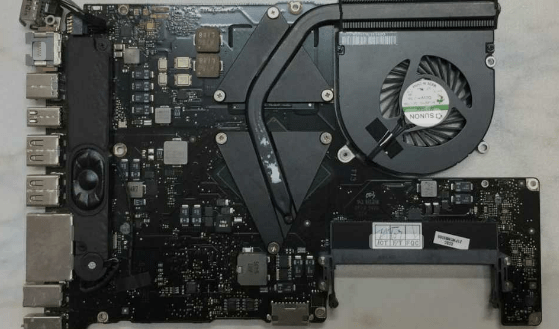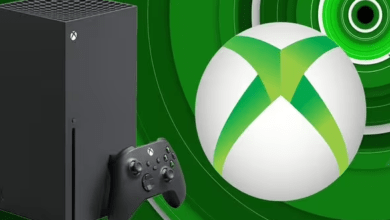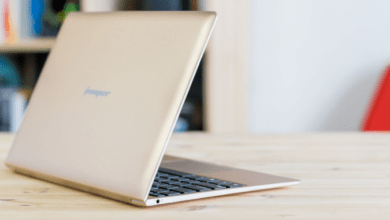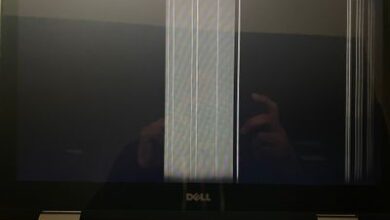How To Fix Logic Board MacBook Pro? Best Info In 2024

Welcome to the world of Logic Board MacBook Pro, where sleek design meets powerful performance. If you’re a proud owner of this iconic device, then you probably already know that the Logic Board is its beating heart. But what exactly is a Logic Board and why is it so important?
Think of the Logic Board as the command center of your MacBook Pro. It’s responsible for coordinating all the different components and ensuring they work harmoniously together. Without a healthy and functional Logic Board, your MacBook Pro can experience a whole host of issues that can leave you feeling frustrated and disconnected from your digital world.
In this blog post, we will delve into the common problems that can arise with the Logic Board on your beloved MacBook Pro. We’ll also provide troubleshooting steps for those brave enough to tackle simple fixes on their own. And if all else fails, don’t worry! We’ll guide you on when it’s time to seek professional help for Logic Board repairs. So grab your screwdriver (metaphorically speaking) and let’s dive into the fascinating world of fixing your MacBook Pro’s Logic Board!
Common Issues With The Logic Board MacBook Pro
The logic board, also known as the motherboard, is a critical component of your MacBook Pro. It houses various important hardware components like the processor, RAM, and graphics card. Nonetheless, similar to any electronic gadget, it can experience gives that might upset its usefulness. One common issue faced by MacBook Pro users is power-related problems. If your laptop fails to turn on or randomly shuts down without warning, it could indicate an issue with the logic board’s power supply circuitry.
Another frequent problem is overheating. The logic board generates heat during operation and relies on a cooling system to prevent overheating. When this system malfunctions due to dust accumulation or fan failure, it can lead to excessive heat build-up and potential damage to the logic board.
Additionally, faulty ports can cause connectivity issues. If you’re experiencing problems with USB ports not recognizing devices or audio jacks producing distorted sound quality, there might be an underlying issue with the logic board’s port controllers.
Liquid spills are nightmares for MacBook Pro owners. Accidental spills can seep into the internal components of your laptop and damage the delicate circuitry of the logic board. It’s crucial to address these common issues promptly to avoid further complications and ensure your MacBook Pro functions optimally.
Troubleshooting Steps For Logic Board MacBook Pro Problems
When faced with logic board problems on your MacBook Pro, it can be frustrating and worrisome. However, there are some troubleshooting steps you can take to identify and potentially resolve the issue. Start by ensuring that all connections between the logic board and other components are secure. Sometimes loose or disconnected cables can cause problems. Carefully inspect each connection point and reseat any loose cables.
Next, try resetting the System Management Controller (SMC) on your MacBook Pro. This process varies depending on the model, so refer to Apple’s support documentation for specific instructions. Resetting the SMC can often fix issues related to power management or system performance.
If that doesn’t work, you may need to isolate potential hardware conflicts by disconnecting external devices one at a time and testing if the problem persists. Faulty peripherals or incompatible hardware can sometimes interfere with the logic board’s functionality. Another troubleshooting step is running diagnostic tests using Apple’s built-in diagnostics tool or third-party software designed for Mac systems. These tests can help pinpoint any specific hardware failures or errors within the logic board itself.
If none of these steps resolve the issue or if you’re uncomfortable performing them yourself, it may be time to seek professional help from an authorized service provider or Apple Store. They have specialized tools and expertise to diagnose and repair logic board problems accurately. Remember that troubleshooting complex issues like logic board problems requires patience and caution. Always back up your data before attempting any repairs, as there is a risk of data loss during troubleshooting processes.
DIY Fixes For Simple Logic Board Issues
When it comes to fixing simple logic board issues on your MacBook Pro, there are a few DIY steps you can take before seeking professional help. These fixes might not require in-depth technical knowledge, but they can greatly improve the performance of your device. Make sure your MacBook Pro is powered off and disconnected from any power source. This will prevent any electrical mishaps during the troubleshooting process. Next, carefully remove the bottom cover of your laptop using the appropriate tools.
Once inside, inspect the logic board for any visible signs of damage such as loose connections or burnt components. If you notice any loose cables or connectors, gently reseat them back into place to ensure proper connection. Dust and debris can also cause issues with your logic board, so use compressed air or a soft brush to clean out any accumulated particles.
Software-related problems can often be fixed by resetting system management controller (SMC) or NVRAM settings. Follow Apple’s official guidelines on how to perform these resets based on your specific model of MacBook Pro. In some cases, replacing faulty RAM modules or outdated firmware may solve logic board issues. Make sure to consult reliable sources and follow proper instructions when attempting these upgrades.
Remember that not all logic board problems are fixable through DIY methods. If you encounter more complex issues like liquid damage or severe hardware failure, it’s best to leave it in the hands of professionals who have specialized expertise in repairing MacBooks. By taking proactive measures and learning basic troubleshooting techniques for simple logic board problems, you can potentially save time and money while ensuring optimal performance for your beloved MacBook Pro.
When To Seek Professional Help For Logic Board Repair
When it comes to the logic board of your MacBook Pro, there may come a time when you encounter issues that are beyond your expertise. While DIY fixes can be effective for simple problems, more complex issues with the logic board require professional help. One key indicator that you should seek professional assistance is if you have already tried troubleshooting steps and the problem persists. If you find yourself stuck in a cycle of attempting repairs without success, it’s time to hand over the reins to an expert.
Another sign that it’s time to consult a professional is if you lack the necessary technical knowledge or tools required for logic board repair. Logic boards are intricate components, and attempting repairs without proper understanding or equipment can lead to further damage. Additionally, if your MacBook Pro is still under warranty or covered by AppleCare, seeking professional help is crucial. Tampering with the logic board on your own could void any existing warranties and leave you responsible for costly repairs.
Professional technicians specialize in diagnosing and fixing logic board issues efficiently and effectively. They have access to specialized tools and equipment specifically designed for Mac devices, ensuring accurate diagnostics and precise repairs. Remember that prevention is always better than cure when it comes to electronics. Regularly maintaining your MacBook Pro can help prevent potential logic board problems from occurring in the first place. This includes keeping your device clean from dust and debris, avoiding liquid spills near your laptop, and using surge protectors during power outages or electrical storms.
Knowing when to seek professional help for logic board repair on your MacBook Pro can save you time, money, and frustration in the long run. By recognizing signs such as persistent issues after troubleshooting attempts or lacking technical knowledge/tools needed for repair – reaching out to experts ensures proper diagnosis & efficient solutions! Don’t forget about warranty coverage too – DIY efforts might void those protections! Keep up regular maintenance practices like cleaning & protection against external threats while handling electronic devices too – it’s a win-win for your MacBook Pro & its logic board! So,
Tips For Maintaining A Healthy Logic Board In Your MacBook Pro
1. Keep It Clean
Dust and debris can accumulate on the logic board, causing overheating and potential damage. Regularly clean your MacBook Pro, paying special attention to the keyboard area where dust particles tend to settle.
2. Use Surge Protectors
Power surges can wreak havoc on electronic devices, including your MacBook Pro’s logic board. Invest in a surge protector to safeguard against sudden voltage spikes and protect your valuable device.
3. Avoid Liquid Exposure
Liquids and electronics don’t mix well, so make sure to keep drinks away from your MacBook Pro at all times. Accidental spills can cause irreparable damage to the logic board.
4. Proper Ventilation
Ensure that your MacBook Pro has adequate airflow by not covering or blocking the vents. Overheating is a common issue that can lead to logic board failures.
5. Update Software Regularly
Keeping your operating system up-to-date ensures compatibility with new hardware components and helps prevent software-related issues that could affect the logic board’s performance.
6. Have Good Backup Practices
Regularly backing up important files will not directly maintain the health of your logic board but will help you recover data in case of any unforeseen issues or repairs needed on it.
By following these tips, you can help prolong the lifespan of your MacBook Pro’s logic board and ensure optimal performance for years to come!
Conclusion
In this rapidly advancing digital age, our MacBook Pro has become an essential tool that helps us navigate both our personal and professional lives. And at the heart of this powerful machine lies the logic board, a crucial component that ensures everything runs smoothly. Throughout this article, we have explored the importance of the logic board in a MacBook Pro and discussed common issues that can arise.
We have also provided troubleshooting steps for DIY fixes and highlighted when it is necessary to seek professional help for logic board repair. However, prevention is always better than cure. Taking care of your logic board from day one is key to ensuring optimal performance and longevity for your beloved MacBook Pro. Here are some tips to keep your logic board healthy:
1. Keep Your MacBook Pro Clean
Dust and debris can accumulate over time, leading to overheating or electrical connection issues on your logic board. Routinely perfect your PC utilizing compacted air or a delicate brush.
2. Protect Against Power Surges
Invest in a surge protector or uninterruptible power supply (UPS) to shield against sudden power spikes that can damage sensitive components like the logic board.
3. Handle With Care
When transporting or using your MacBook Pro, be gentle with it to prevent accidental drops or impacts which could cause internal damage.
4. Maintain Proper Ventilation
Ensure adequate airflow around your laptop by not obstructing ventilation ports or placing it on soft surfaces like pillows or blankets that may block airflow.
5. Update Software Regularly
Keeping your operating system and applications up-to-date helps maintain compatibility with hardware components such as the logic board.
By following these simple yet effective maintenance practices, you can prolong the life of your MacBook Pro’s logic board while optimizing its overall performance. Understanding how vital the Logic Board is in powering our sleek devices like MacBooks cannot be emphasized enough! It acts as their backbone ensuring seamless functionality throughout various tasks we perform each day.




